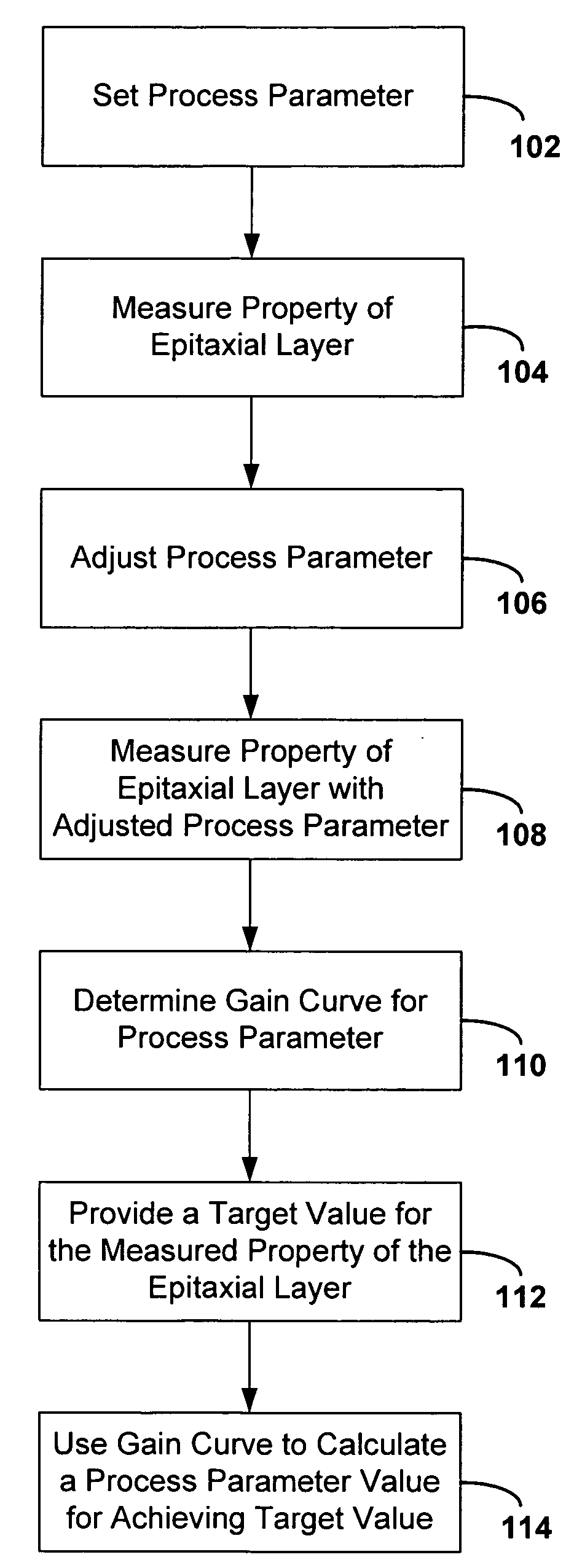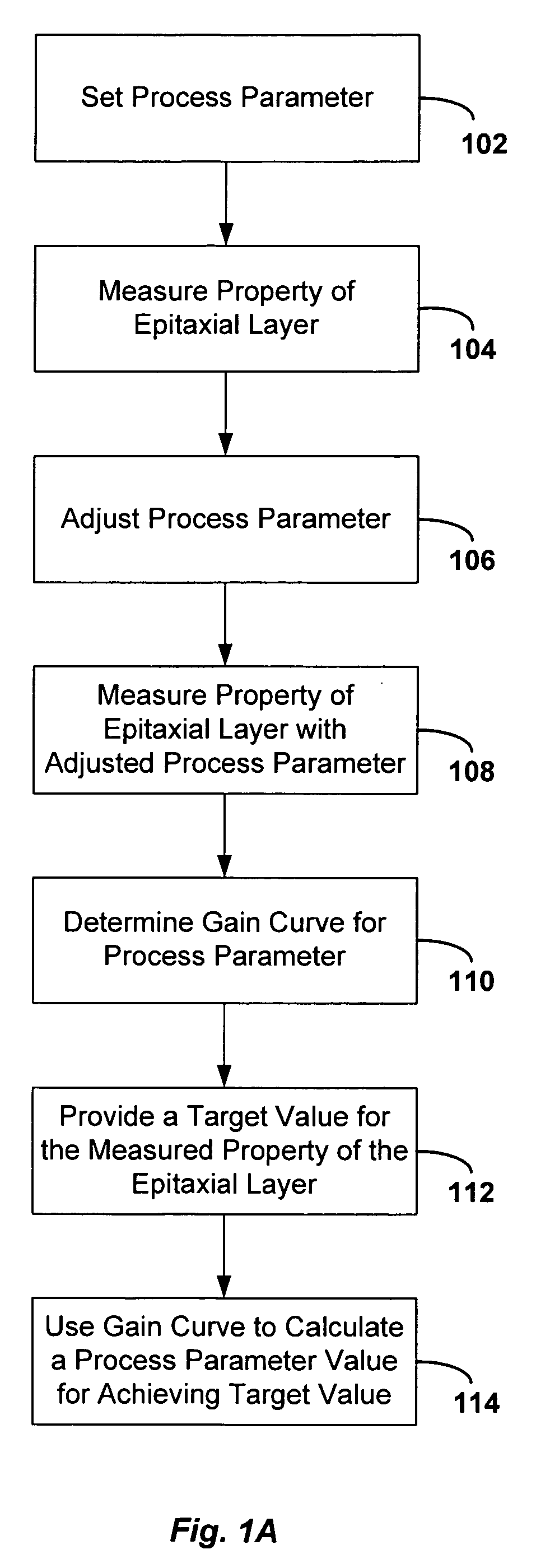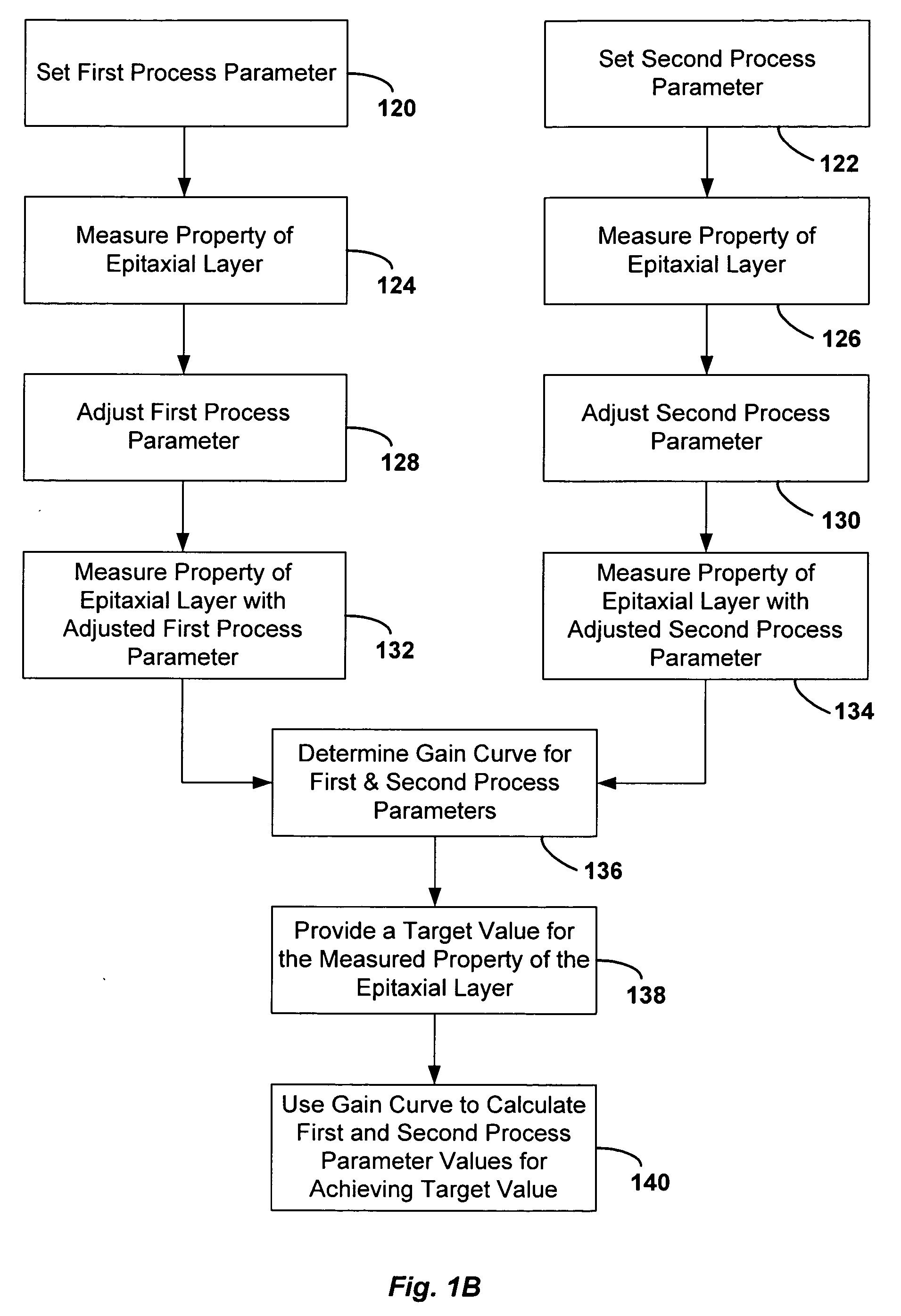Method and system for deposition tuning in an epitaxial film growth apparatus
a film growth and epitaxial technology, applied in the direction of individual semiconductor device testing, semiconductor/solid-state device testing/measurement, instruments, etc., can solve the problems of increasing manual control of semiconductor film growth process, difficult to maintain and difficult to achieve high level of uniformity. , to achieve the effect of minimizing deviations from the target thickness
- Summary
- Abstract
- Description
- Claims
- Application Information
AI Technical Summary
Benefits of technology
Problems solved by technology
Method used
Image
Examples
Embodiment Construction
[0019] Methods and systems are described for tuning parameters in an epitaxial film growth process in order to achieve films with a desired thickness uniformity and / or compositional distribution. Tunable process parameters include power settings for heating elements in the various substrate heating zones of the process chamber, and partial pressures and flow rate settings of the process gases used in the chamber, among other parameters.
[0020] The methods include the creation of gain curves and / or algorithms that model the effects of the process parameters on the characteristics of the films. For example, a gain curve may be determined that plots a ratio of the power delivered to heating elements in different substrate heating zones (i.e., the process parameter) against variations in the thickness of the film layer. The gain curve may be used to calculate a power ratio that forms a film layer with minimized variations from a target thickness. Additional aspects of embodiments of the...
PUM
| Property | Measurement | Unit |
|---|---|---|
| diameter | aaaaa | aaaaa |
| angle | aaaaa | aaaaa |
| temperature | aaaaa | aaaaa |
Abstract
Description
Claims
Application Information
 Login to View More
Login to View More - R&D
- Intellectual Property
- Life Sciences
- Materials
- Tech Scout
- Unparalleled Data Quality
- Higher Quality Content
- 60% Fewer Hallucinations
Browse by: Latest US Patents, China's latest patents, Technical Efficacy Thesaurus, Application Domain, Technology Topic, Popular Technical Reports.
© 2025 PatSnap. All rights reserved.Legal|Privacy policy|Modern Slavery Act Transparency Statement|Sitemap|About US| Contact US: help@patsnap.com



